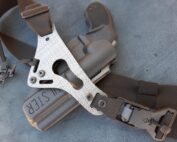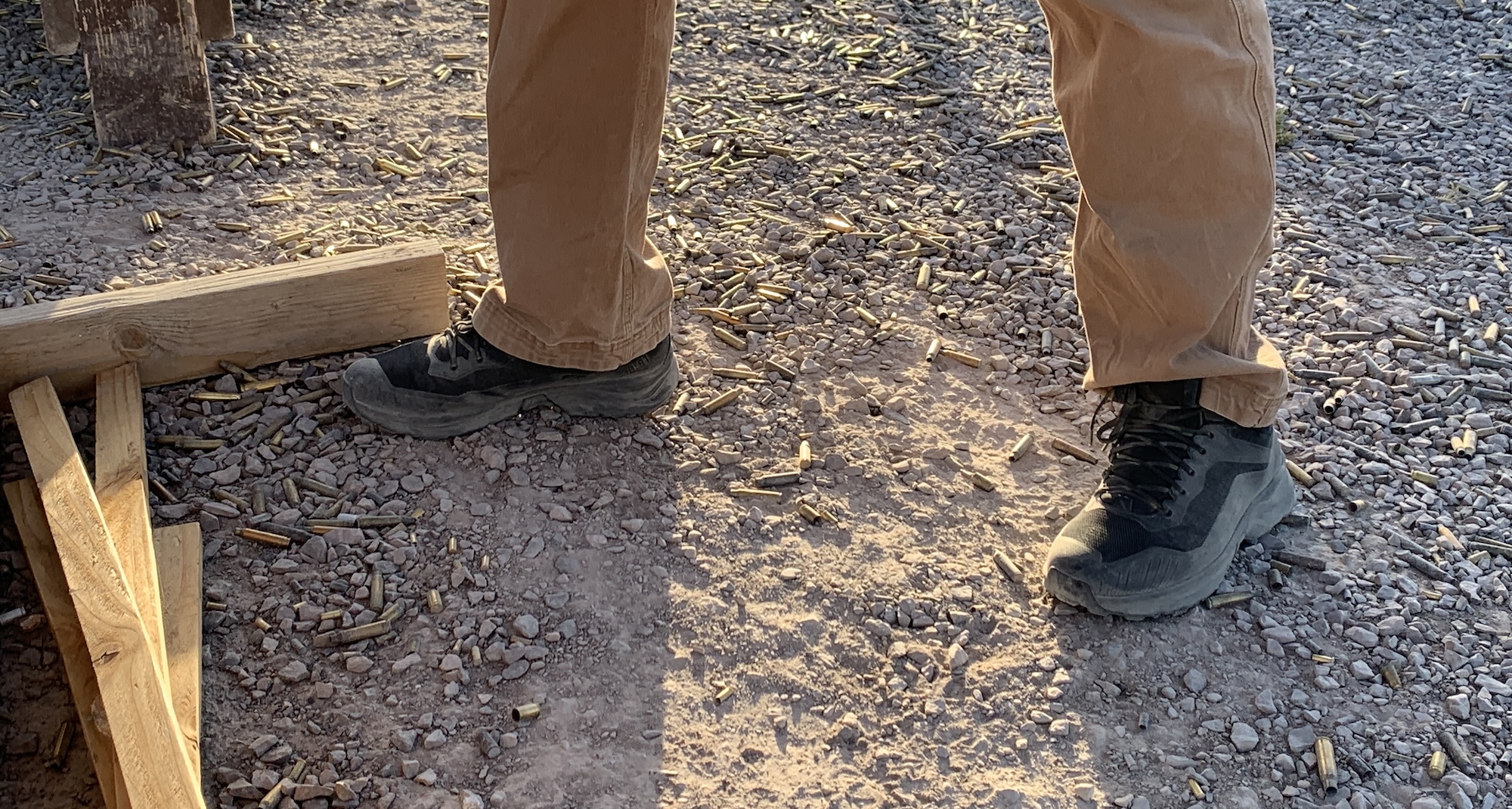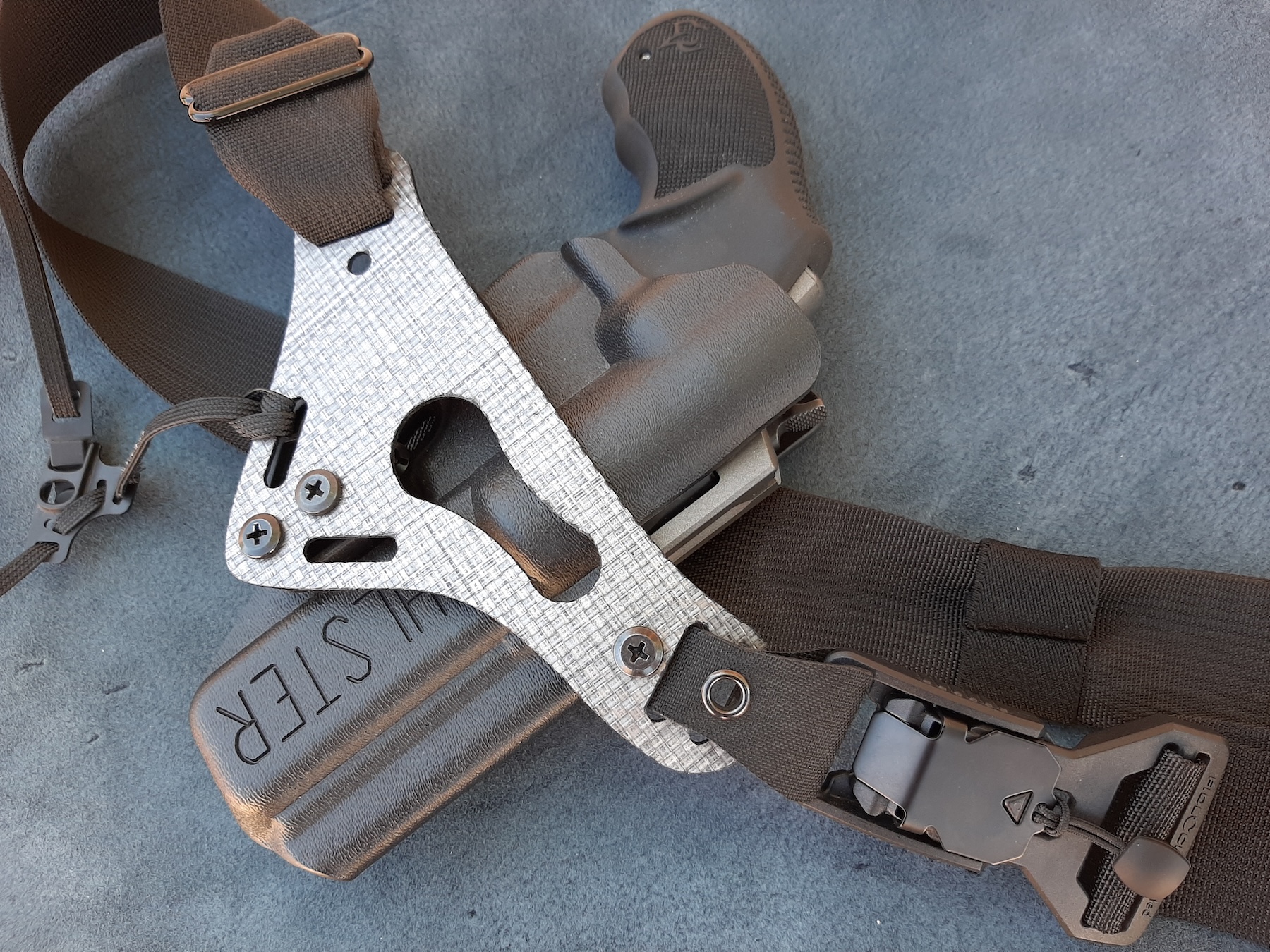
SIG_SSA_2023_0479-1200×800-5b2df79
Understanding the impact of wind on a projectile’s trajectory is crucial for precision shooting. Trajectory refers to the path that a projectile or object follows through space because of external forces acting upon it. For bullets or other projectiles, this path is typically a curved line due to the influence of gravity and other factors.
Wind can significantly alter a projectile’s trajectory. It can cause a projectile to drift off course, change its speed, or even affect its stability. Wind direction is usually indicated by points on a compass, while speed is measured in units like miles per hour (mph) or meters per second (m/s).
Drift & Deflection
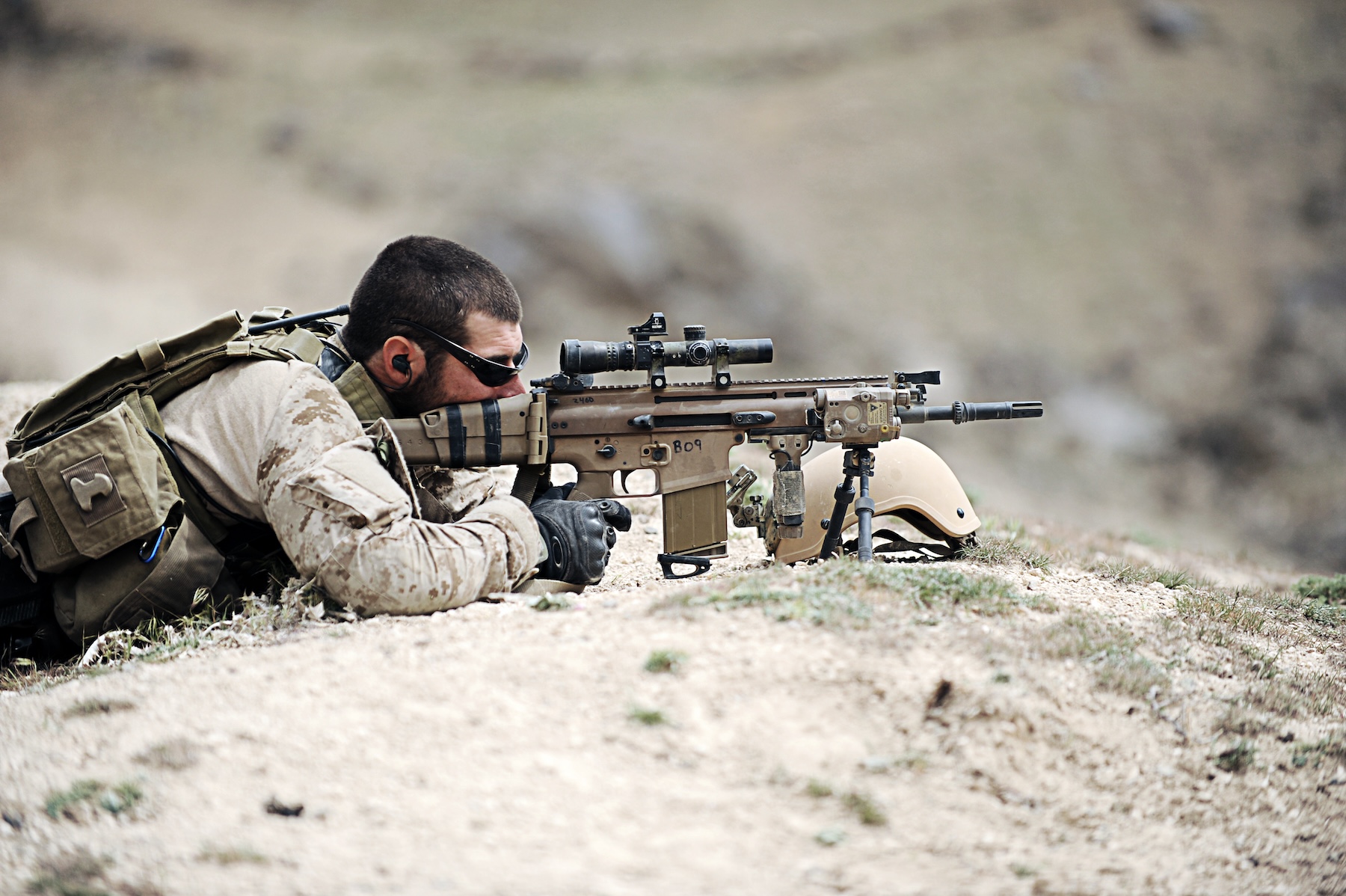
Even if one isn’t a sniper, knowing how to read the wind is still important. The SCAR-Heavy is a battle rifle rather than a sniper rifle (PC – Chief Mass Communication Specialist Jeremy L. Wood/USN)
Wind affects trajectory in two main ways: wind drift and vertical deflection. The horizontal movement of the projectile away from its intended path is wind drift, while deflection is the change in vertical movement caused by wind. Wind drift occurs when the wind pushes the projectile sideways during its flight. The amount of drift depends on the wind’s speed and the projectile’s time in the air. Crosswinds (winds blowing perpendicular to the projectile’s path) have the greatest impact on wind drift.
Although less common, vertical deflection can occur when headwinds or tailwinds (winds blowing directly against or with the projectile’s path) either slow down or speed up the projectile, affecting its drop rate due to gravity.
Ballistic Coefficient
The ballistic coefficient (BC) is a measure of a projectile’s ability to overcome air resistance in flight. It is a crucial factor in determining a bullet’s flight characteristics, including its susceptibility to wind drift. The BC is a number that tells us how well a bullet can move through the air. Think of it as a score for aerodynamics: the higher the score, the better the bullet slices through the wind.
Bullets with a higher BC are less affected by wind because they have a more streamlined shape, which allows them to cut through the air more efficiently. A higher BC also means the bullet will be more stable in flight, which reduces the amount of wind drift. Bullets with a higher BC maintain their velocity better over long distances, resulting in a flatter trajectory and less wind drift.
Reading Wind

In military and law enforcement sniping, the accuracy of a shot can mean the difference between life and death. The ability to accurately gauge and adjust for the wind’s influence is essential. Photo: US Navy.
Reading the wind is about understanding these effects and compensating for them. The first step in reading wind is to determine its direction and speed. Begin by observing your surroundings; the sway of leaves, the bending of grass, or the fluttering of flags can all offer valuable insights into the wind’s direction and velocity. Wind flags are also an excellent resource, offering visual indicators of wind patterns along your projectile’s path. Developing the ability to estimate wind speed is another essential skill. This can be achieved through tactile sensations on your skin or by utilizing a wind meter. Wind meters, also known as anemometers, are indispensable tools for accurately measuring wind speed and direction.
Consistent practice in diverse wind conditions is crucial, as it hones your ability to intuitively gauge the necessary adjustments for wind drift. When it comes to aiming, it’s important to counteract wind drift by targeting slightly into the wind’s direction. The intensity of the wind dictates the degree of your aim adjustment. Ballistic calculators or applications can provide precise wind drift data tailored to your specific firearm and ammunition, ensuring your shots are on target.
In situations where specialized tools for calculating wind drift are unavailable, the Applied Ballistics Wind Hack offers a practical alternative. This straightforward method yields an approximate measure of the deflection caused by a 10-mph crosswind by considering the bullet’s drop and its ballistic coefficient (BC). To apply this technique, simply add 2 to the first digit of your G7 BC. Then, divide the bullet’s drop in MOA by the sum you’ve just calculated to determine the crosswind deflection. This formula is especially accurate for bullets in supersonic flight and is based on a 100-yard zero. It serves as a valuable technique for estimating wind drift in the absence of complex equipment.
To compensate for vertical deflection, shooters may need to adjust their aim point above or below the target, depending on whether an updraft or downdraft is present. This requires practice and experience, as the adjustments will vary based on the conditions and the type of projectile being used.
Ballistic Calculators & Apps

Mastering the art of reading the wind and its effect on trajectory is like learning a musical instrument—it demands training, dedication, practice, and a keen sense of awareness (PC – SIG SAUER).
Ballistic calculators are vital for shooters to improve shot precision. They calculate bullet drop, wind drift, and other factors. Available as smartphone apps, web tools, or handheld devices, they range from manual input versions to those syncing with external devices for live data. Handhelds offer immediate environmental ballistic data. Both free and paid options are available.
Common Mistakes
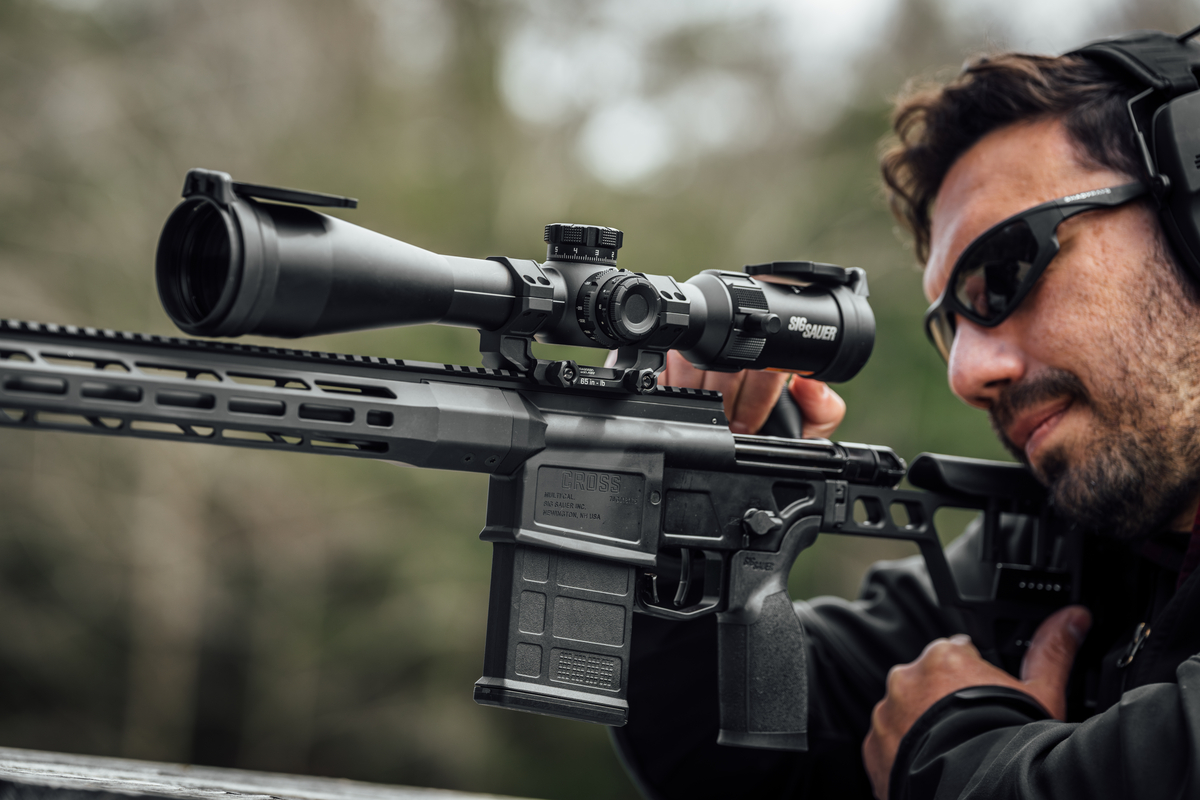
In long-range shooting, the margin for error is slim; even minor miscalculations in wind reading can lead to significant deviations from the target. Photo SIG SAUER.
When compensating for wind drift, it’s important to be aware of common mistakes that can affect accuracy. A recurring mistake is mis-estimating the wind’s direction and speed, often due to an over-reliance on flags or similar indicators while overlooking broader environmental cues. This can result in significant misjudgments. Similarly, improper scope adjustments, devoid of careful calculations based on wind intensity and the projectile’s ballistic coefficient, can lead to missing the intended target. Overcompensation is another error shooters encounter, particularly under the duress of competition or in tactical scenarios, which may cause the projectile to veer off course.
The importance of consistent practice in varied wind conditions cannot be overstated; it cultivates an intuitive understanding of the necessary compensations for wind drift. Additionally, neglecting to observe the bullet’s point of impact robs shooters of valuable feedback needed for precise subsequent adjustments. Lastly, eschewing the use of ballistic calculators forsakes the advantage of modern technology, which offers exacting data for wind drift compensation, potentially compromising shot accuracy.
Final Thoughts
Reading wind and understanding its effect on trajectory is a skill that requires practice and experience. By paying attention to environmental cues and learning to compensate for wind’s influence, you can improve your accuracy.



